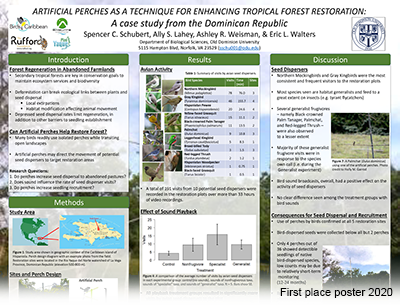ORCID
0000-0003-0879-2308 (Campbell)
College
College of Health Sciences
Program
Ph.D. Kinesiology and Rehabilitation - School of Rehabilitation Sciences
Publication Date
Spring 2020
DOI
10.25883/bvpn-9q23
Abstract
Diagnosing concussions provides challenges for healthcare professionals due to current diagnostic protocols utilizing subjective input from patients. Recent studies have shown relationships between specific salivary microRNA levels and concussions, but it is unknown if this is due to concussive forces or physical exertion. Analysis of this distinction may contribute to further confirming the relationship of concussions and microRNA, improving techniques for objective assessments of concussion. Objective: To measure the effects of physical exertion through exercise on specific salivary microRNA. Methods: Twenty non-intercollegiate athletes (10:M, 10:F) were recruited for this case series. After ensuring the participants received a minimum of 6-hours of sleep the previous night, a baseline salivary sample was taken with the p-157: Nucleic acid stabilization kit (DNA Genotek; Ottawa, Canada). Participants completed a graded exercise test on a treadmill following the Bruce Protocol (VO2-Max). Participants began walking and investigators gradually increased the intensity at regular 3-minute intervals. Intensity increases were achieved by increasing both the speed and incline of the treadmill until maximal physical exhaustion was achieved. Physiological measures were measured to ensure safety. Immediately following the graded exercise test, a second salivary sample was collected. All samples were sent to Quadrant Biosciences for analysis and NextGen sequencing. Upon receiving normalized data from Quadrant Biosciences (Syracuse, NY), investigators performed paired t-tests (α Conclusions: The findings of this study reinforce the relationship between 6 salivary microRNA and concussions. The body of evidence of the aforementioned salivary microRNA’s relationship to concussions is strengthened as no significant differences were found, indicating the concentration of the 6 salivary microRNA are not affected by exercise.
Keywords
Concussions, Salivary microRNA, Physical exertion, Exercise test
Disciplines
Exercise Physiology | Exercise Science | Sports Sciences
Files
Download Full Text (537 KB)
Recommended Citation
Campbell, Thomas R.; Martinez, Jessica C.; Robertson, Noah L.; Clements, Felicia G.; Valle, Emily N.; Etiennet, Wyclef; Ferguson, Audrey C.; and Kelleran, Klye J., "The Effects of Physical Exercise on Salivary microRNA Levels" (2020). College of Health Sciences Posters. 5.
https://digitalcommons.odu.edu/gradposters2020_healthsciences/5



